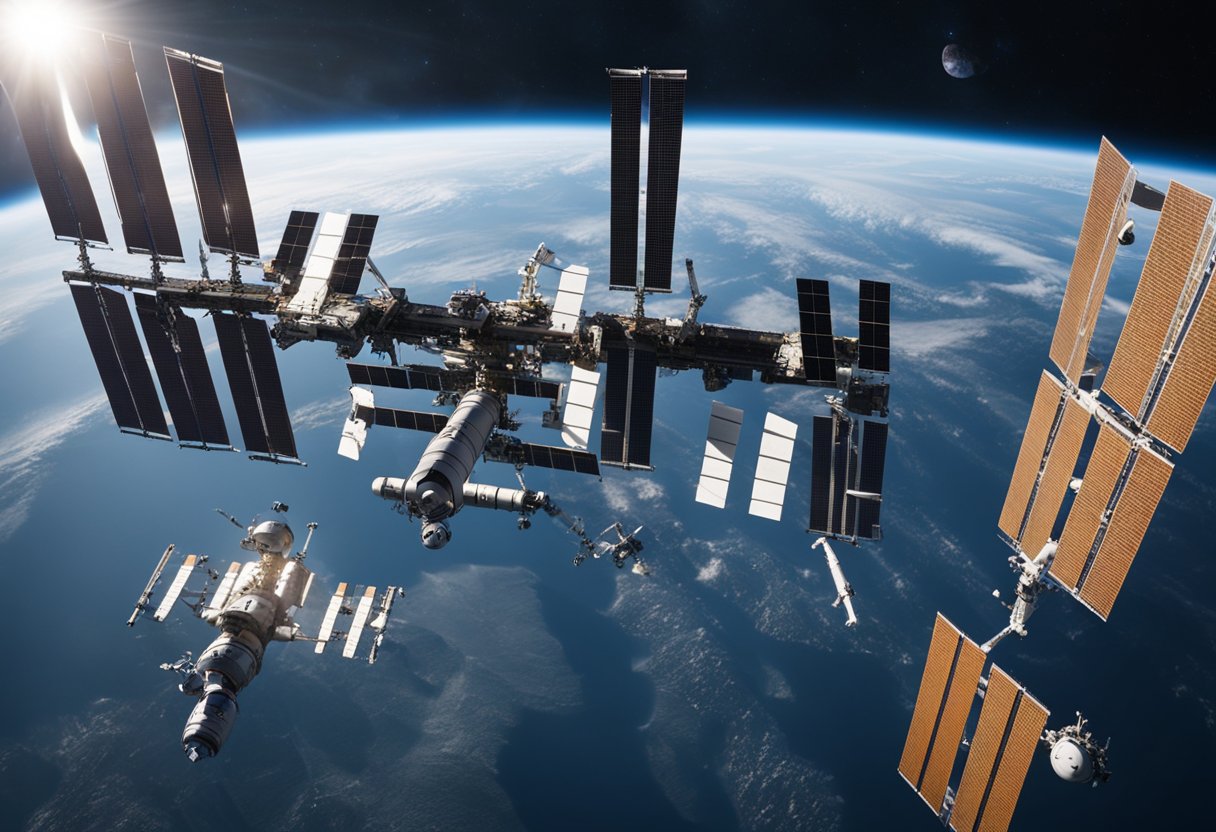
International Space Station Updates – The International Space Station (ISS), humanity’s floating laboratory in the cosmos, continues to be a beacon of international cooperation and scientific advancement. Orbiting 400 km above Earth, the ISS has been operational for over two decades and has hosted astronauts from various nations. Our collective endeavour in space has yielded tremendous insights into life sciences, physics, astronomy, and even Earth sciences, thanks to the unique microgravity environment of the station.
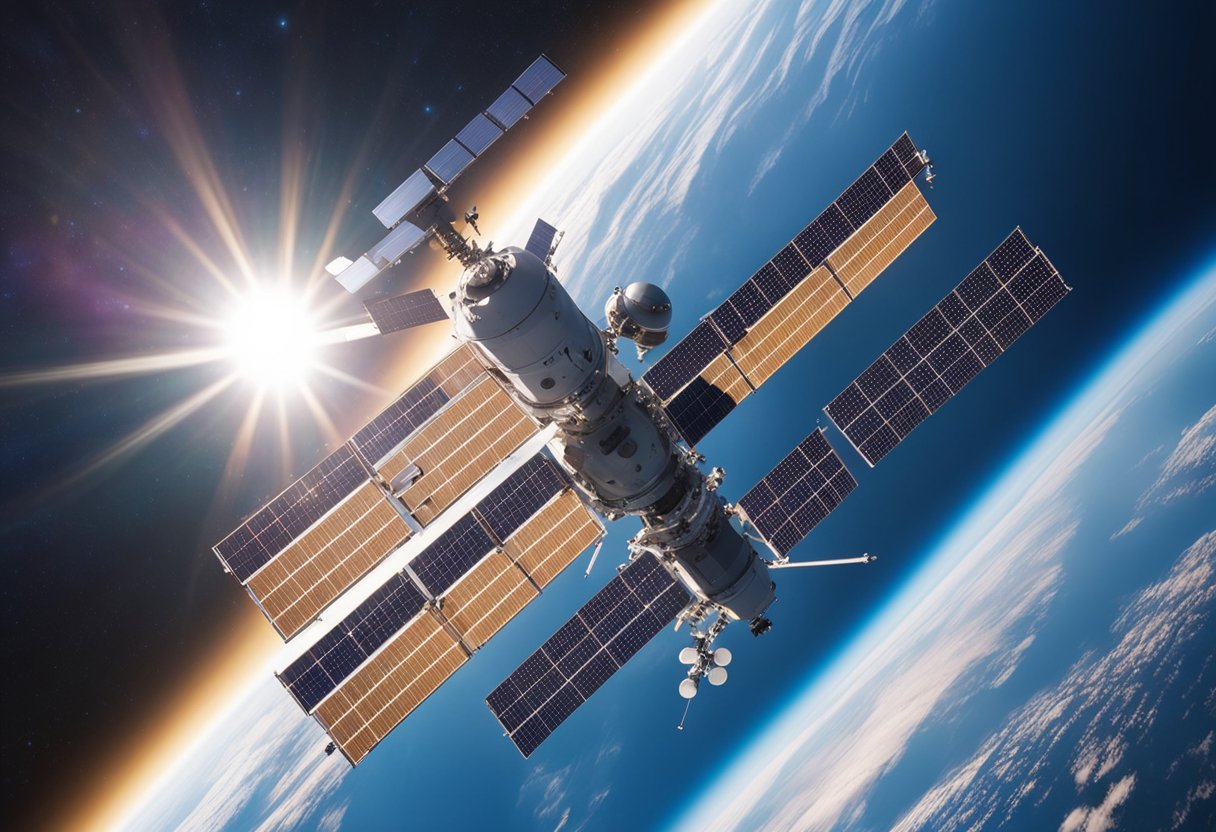
Recent updates from the ISS include advancements in onboard research, technology upgrades, and international and commercial partnerships enhancing the station’s capabilities. With regular crew rotations and resupply missions, the ISS is a hub of constant activity. Astronauts aboard the station engage in a diverse array of experiments, ranging from fundamental science to testing equipment for future deep space missions. As we improve life on Earth and prepare for our next leap to the Moon, Mars, and beyond, the ISS serves as the cornerstone for our extraterrestrial ambitions.
The International Space Station (ISS) represents a monumental collaborative effort in human spaceflight. Launched into orbit in 1998, the ISS has since served as a microgravity laboratory where astronauts and cosmonauts conduct experiments in biology, human biology, physics, astronomy, and other sciences.
International Partnerships:
The operation of the ISS is a global partnership among five space agencies:
Construction in Orbit:
The assembly of the space station began with the launch of the Russian module Zarya from Baikonur Cosmodrome in Kazakhstan. This was quickly followed by the connecting module Unity, delivered by the Space Shuttle. Over the next two decades, the station expanded with the addition of laboratories, solar panels, and living quarters.
An Orbiting Home and Lab:
Astronauts from 19 countries have lived on the ISS, benefiting from the unique environment that Earth’s gravity cannot replicate. The station has been continuously inhabited since November 2000, with expeditions typically lasting around six months.
The Role of Launch Facilities:
The ISS has been supported by a network of launch facilities. Baikonur Cosmodrome in Kazakhstan is notable for its key role in both historical and contemporary space travel.
As we look to the future, advancements in space exploration continue to grow. Space tourism, as explored on websites like SpaceVoyageVentures.com, points towards an exciting era where more of us might experience the wonder of orbital flight.
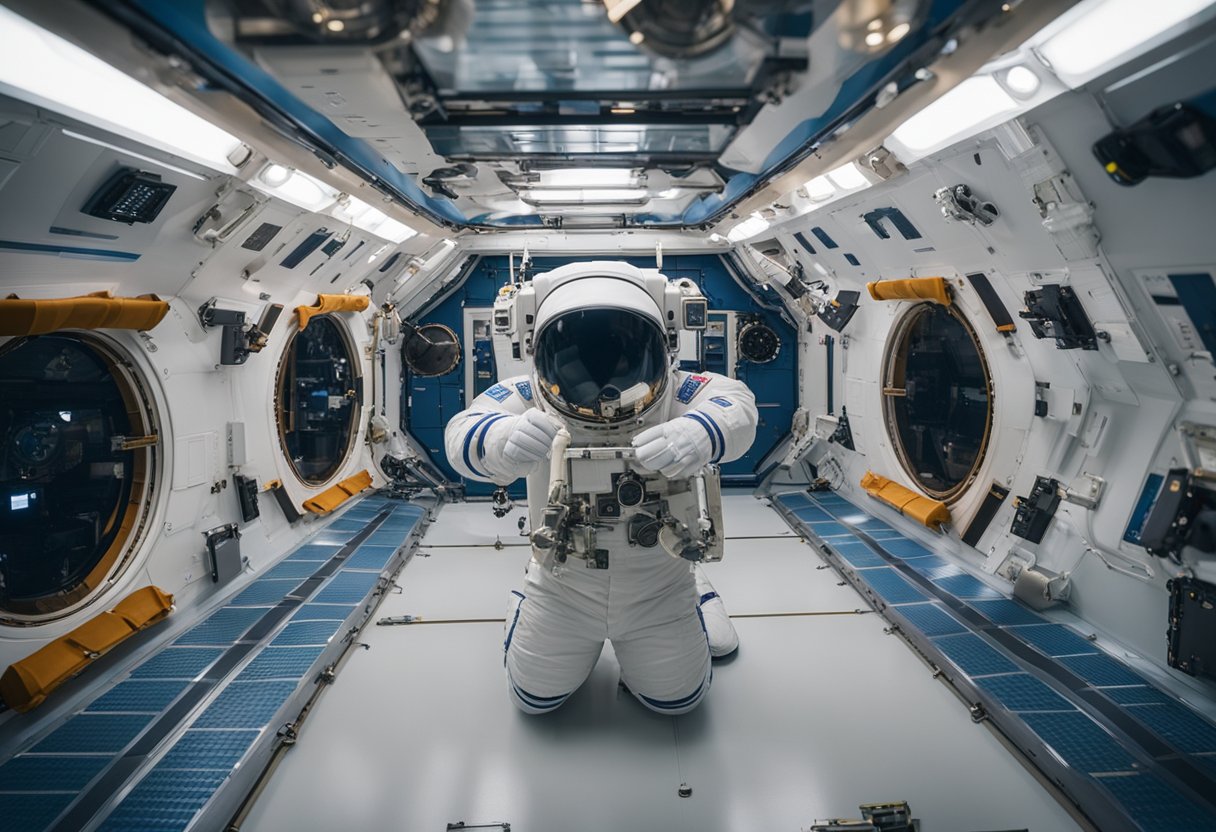
We continuously monitor the International Space Station as it serves as a beacon of international cooperation and scientific advancement. Activities aboard the station include frequent crew changes, vital maintenance through spacewalks and repairs, as well as ongoing scientific research.
NASA astronaut Frank Rubio, along with Russian cosmonauts Sergey Prokopyev and Dmitri Petelin, have recently joined the crew as part of Expedition 68. They took over from former commander Mark Vande Hei and his colleagues. The integration of new crew members ensures that operations on the station continue seamlessly and that knowledge is passed along effectively.
Our crew members regularly conduct spacewalks to maintain and upgrade the station’s systems. For instance, our crew recently replaced a faulty antenna, demonstrating our commitment to keeping communication systems operational. These operations are critical to the safety and functionality of the orbiting laboratory.
The conduction of scientific research is a primary function of our crew. Recently, NASA Science and hardware were sent to the station aboard a Northrop Grumman resupply spacecraft. These materials are utilised for various experiments, such as studying the effects of microgravity on human health and other physical sciences investigations. Our astronauts are committed to broadening our knowledge and making discoveries that can benefit humanity on Earth and in future space exploration efforts.
In maintaining the International Space Station (ISS), we are continuously engaged in intricate operations, including the deployment of robotic arms and the management of module structural integrity. These tasks are vital for the station’s ongoing mission success.
The Station’s Canadarm2 remains a centrepiece in our extravehicular missions. We’ve recently managed complex manoeuvres to support cargo missions and facilitate hardware inspections. The robotic marvel, equipped with a latching end effector, has been critical in grappling and docking visiting spacecraft, including the SpaceX Dragon resupply vessels. Furthermore, its role extends to performing station maintenance and crucial tasks such as coolant leak inspections.
Our commitment to enhancing ISS capabilities sees us overseeing detailed module repair and addition operations. The Russian-built Zvezda Service Module has received focus for life-support systems maintenance. Additionally, the Rassvet Module is regularly checked for its structural well-being as a mooring point for spacecraft, including Russian Soyuz and Progress vehicles. In parallel, we address any equipment malfunctions and suit up in Extravehicular Mobility Units (EMUs) for hands-on repairs, thereby ensuring the ISS remains a safe and effective platform for space exploration and research.
The International Space Station (ISS) serves as a cutting-edge platform for a diverse range of research endeavours, exploring everything from biological systems to advanced physics. Here, we frame our investigations around the unique conditions of microgravity, enabling us to enhance our understanding of various phenomena and nurture technological advancements.
In the realm of biological and botanical studies, our focus orbits around how living organisms adapt to space. Through meticulously designed experiments, we assess how microgravity affects plant growth and immunity. One such endeavour involves the cultivation of tomatoes, providing insights that could be crucial for future long-duration spaceflights. Findings from these space gardening ventures are not just pivotal for astronauts’ sustenance but also for enhancing agricultural techniques on Earth.
Within physical science investigations, we closely monitor the interactions and behaviours of physical systems in a microgravity environment. This includes comprehensive studies into fluid dynamics and combustion, which could revolutionise materials and energy processes. Our investigations help to unravel the intricate ways fundamental forces operate outside of Earth’s gravity, with experiments revealing new perspectives on physics that inform both theoretical models and practical applications.
Technology development on the ISS is about pushing the envelope on what’s possible. We employ the station as a testbed for advanced devices and systems. These tests underpin significant breakthroughs in supportive technologies for sustained human and robotic presence in space, such as those entailed in the continually evolving domain of space tourism. Our relentless pursuit to innovate ensures we stay at the forefront, carving pathways that feedback into terrestrial technological progress.
Our continued success in space exploration is largely due to the unwavering commitment across various space agencies worldwide. We proudly collaborate with the European Space Agency (ESA), Russia’s Roscosmos, Japan Aerospace Exploration Agency (JAXA) among others, fostering strong ties that lead to shared successes on the International Space Station (ISS).
With each organisation bringing its unique expertise and resources to the table, we enable groundbreaking international scientific research. The ISS itself is a beacon of global cooperation, representing not only NASA but also the collective efforts of other nations including European, Japanese, and Russian partners.
| Agency | Contribution |
|---|---|
| NASA | Leadership, advanced technology, and the bulk of operational support. |
| ESA | Modules like Columbus, scientific research, and development of the Orion service module. |
| Roscosmos | Soyuz and Progress spacecraft for personnel and cargo, respectively. |
| JAXA | Kibo laboratory module and resupply vehicles. |
It is this blend of cultural diversity and unified purpose that empowers us to expand humanity’s reach into the cosmos. Our partnerships have paved the way for ambitious projects, such as the development of the lunar Gateway, a space station that will orbit the Moon. For those who dream of participating in the voyage beyond our atmosphere, the nascent space tourism industry, as detailed at SpaceVoyageVentures.com, provides exciting insights into the potential future of public space travel.
Our progress hinges on the strength of our international partnerships, without which we could not hope to achieve the monumental task of space exploration and colonisation. Thus, we continue to build and strengthen this essential collaborative spirit.
We are currently witnessing a pivotal era in space exploration, where commercial entities are playing a crucial role in supporting the International Space Station (ISS). Specifically, SpaceX and Northrop Grumman have become integral partners in facilitating resupply missions, leveraging their unique spacecraft and launch capabilities.
SpaceX, with its Dragon spacecraft, has significantly advanced the efficiency and frequency of cargo delivery to the ISS. One of the most reliable workhorses in this endeavour has been the Falcon 9 rocket, which is launched from sites like Cape Canaveral in Florida. Our collaboration with SpaceX is part of the broader Commercial Crew Program, which aims to ensure continuous human presence onboard the ISS. Moreover, milestones and detailed coverage of these missions are regularly featured on NASA Television, allowing us to share these achievements with a global audience.
Northrop Grumman has also been a steadfast partner through their Cygnus spacecraft, providing another reliable vessel for resupply missions. The Cygnus cargo ship is known for its robust carrying capacity and safety record, often carrying vital supplies, scientific experiments, and equipment to support the diverse operations on the ISS. Cygnus missions, launched aboard Antares rockets, are a testament to the innovation and commitment shared between us and our commercial partners like Northrop Grumman for space exploration and station maintenance.
Astronaut health and lifestyle aboard the International Space Station (ISS) encompass daily routines centred on maintaining physical well-being and monitoring medical metrics.
We facilitate the continuous assessment of our crew members’ health through effective diagnostics research within the Human Research Facility. Cosmonauts and astronauts perform regular vein scans and blood tests, crucial for extending their health while in orbit. Access to real-time data and NASA’s advancement in diagnostic tools, like the rHEALTH One analyzer, plays a pivotal role in monitoring vital signs and adapting healthcare protocols.
Our crew follows a strict schedule that incorporates work, leisure, and communication with Earth. This balance ensures not only the mission’s success but also their psychological well-being. Living in microgravity presents unique challenges, so adapting traditional terrestrial activities to space conditions is key.
We place a high emphasis on exercise and nutrition, pivotal for counteracting the effects of prolonged weightlessness. Our astronauts dedicate around two hours each day to various forms of exercise, using the onboard gym equipment designed to simulate gravity – including treadmills and resistance machines. This routine is critical for preventing bone density loss and muscle atrophy.
In terms of sustenance, our food systems are meticulously planned to provide balanced nutrition and the necessary caloric intake. Our NASA astronauts enjoy a range of foods, which can include tortillas instead of bread to avoid crumbs, canned specialties, rehydratable meals, and even fresh produce on occasion. Ensuring they receive the proper nutrients is fundamental for maintaining health and cognitive function.
Our crew’s well-being is paramount, as it impacts both their ability to perform tasks and their overall experience in space. Through stringent health monitoring and a focus on exercise and nutrition, we strive to create an environment where astronauts can live and work healthily in space.
Our efforts in space are not just about exploration and science; they’re also about connecting with the public and inspiring the next generation. Here’s how we’re bringing the International Space Station (ISS) experience closer to everyone.
We regularly share updates and insights about ISS missions through our official social media channels. On Twitter, @space_station provides real-time mission updates, while @iss_research delves into the fascinating science happening aboard the space station. Over on Instagram, ISS Instagram account offers a visual journey through life in space with stunning photographs and stories.
We ensure the public has numerous ways to stay informed and inspired by our work aboard ISS. Whether through timely social media updates or educational broadcasts via NASA TV, our commitment to outreach remains a core element of our mission.
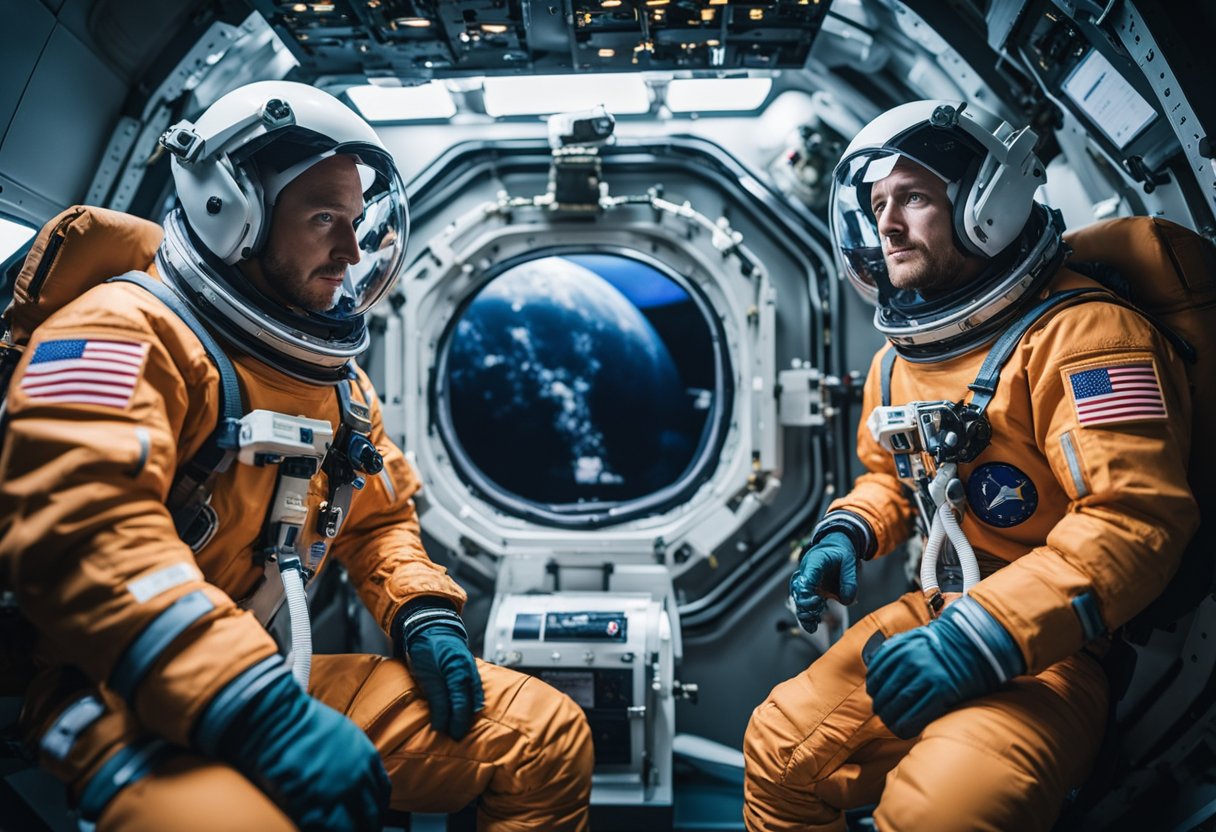
Throughout our continuous habitation of the International Space Station (ISS), we’ve faced several challenges requiring urgent attention and swift action to ensure the safety and well-being of the crew. Below, we detail some of the recent unscheduled repairs and contingencies, as well as the safety protocols in place for dealing with emergencies.
Following an incident involving the Soyuz MS-22 spacecraft, where a coolant leak was identified, we initiated immediate response protocols. The team on Earth quickly ascertained the severity of the situation and worked in concert with the crew to implement a stopgap measure.
The event underscored the relevance of our Extravehicular Mobility Unit (EMU), which allows us to conduct extravehicular activities (EVAs), more commonly known as spacewalks, vital for managing unscheduled repairs outside the ISS. Due to the coolant incident, a scheduled US spacewalk was deferred as we assessed the integrity and functionality of the suits and the safety of the external environment.
Our safety protocols are robust, designed to address a plethora of potential emergencies that may arise in the unique environment of space. In the event of an emergency, each member of our crew is well-trained in a series of critical procedures.
It is through our unflagging commitment to these protocols that we can maintain a safe environment for the crew and ensure the ongoing viability of the ISS as a frontier for human exploration and discovery.
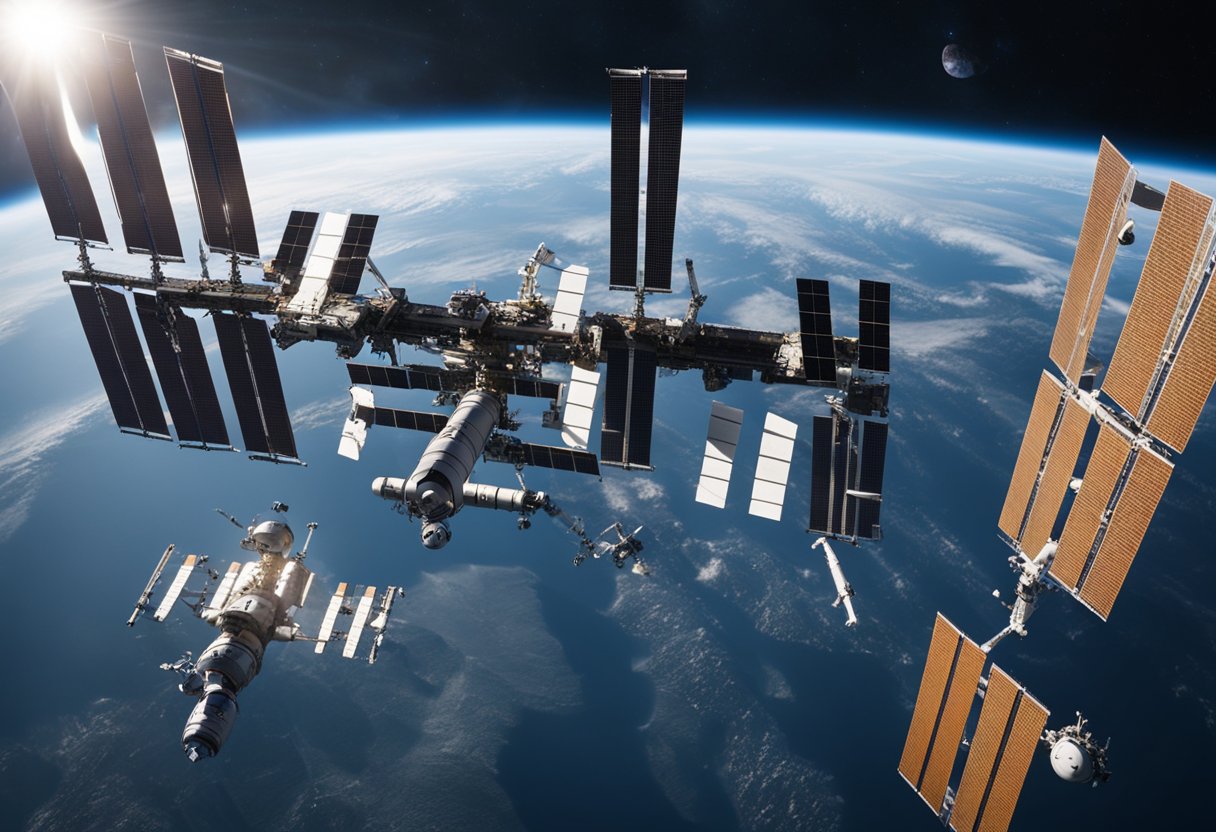
As the International Space Station (ISS) approaches the end of its operational life, we are turning our attention to the future missions that not only honour its legacy but also pave the way for the next steps in human spaceflight. Among the contenders aiming to maintain a human presence in low-Earth orbit, Axiom Space has made headlines. With privately funded missions like the upcoming Axiom Mission 3 (Ax-3), we’re witnessing a shift towards commercial endeavours that continue the scientific and exploratory work initiated by the ISS.
| Agency | Contribution |
|---|---|
| NASA | Launch, coordination, research |
| ESA | Modules, technology, experiments |
| Roscosmos | Spacecraft, propulsion systems |
| JAXA | Kibo module, technology |
| SpaceX | Crewed spacecraft, resupply missions |
We’re actively collaborating with agencies including NASA, ESA, Roscosmos, and JAXA, alongside companies such as SpaceX, to ensure that the spirit of international cooperation and scientific inquiry fostered by the ISS endures. Our objective is to harness this partnership to facilitate a seamless transition from the ISS to new platforms for orbital science and space tourism.
The science conducted aboard the ISS has been groundbreaking, and we’re committed to maintaining this momentum. Prospective modules for research and habitation, built by the likes of Axiom Space, will pick up where the ISS leaves off, capitalising on nearly three decades of continuous human presence in space.
Space tourism is no longer just a dream. New ventures are emerging, such as SpaceVoyage Ventures, which is documenting the potential for future tourism trips, offering a tantalising glimpse into what is soon to become a reality for civilians. Our efforts in the coming years will help ensure that these pioneering missions serve as both a fitting testament to the ISS’s legacy and a gateway to humanity’s continued exploration of the cosmos.
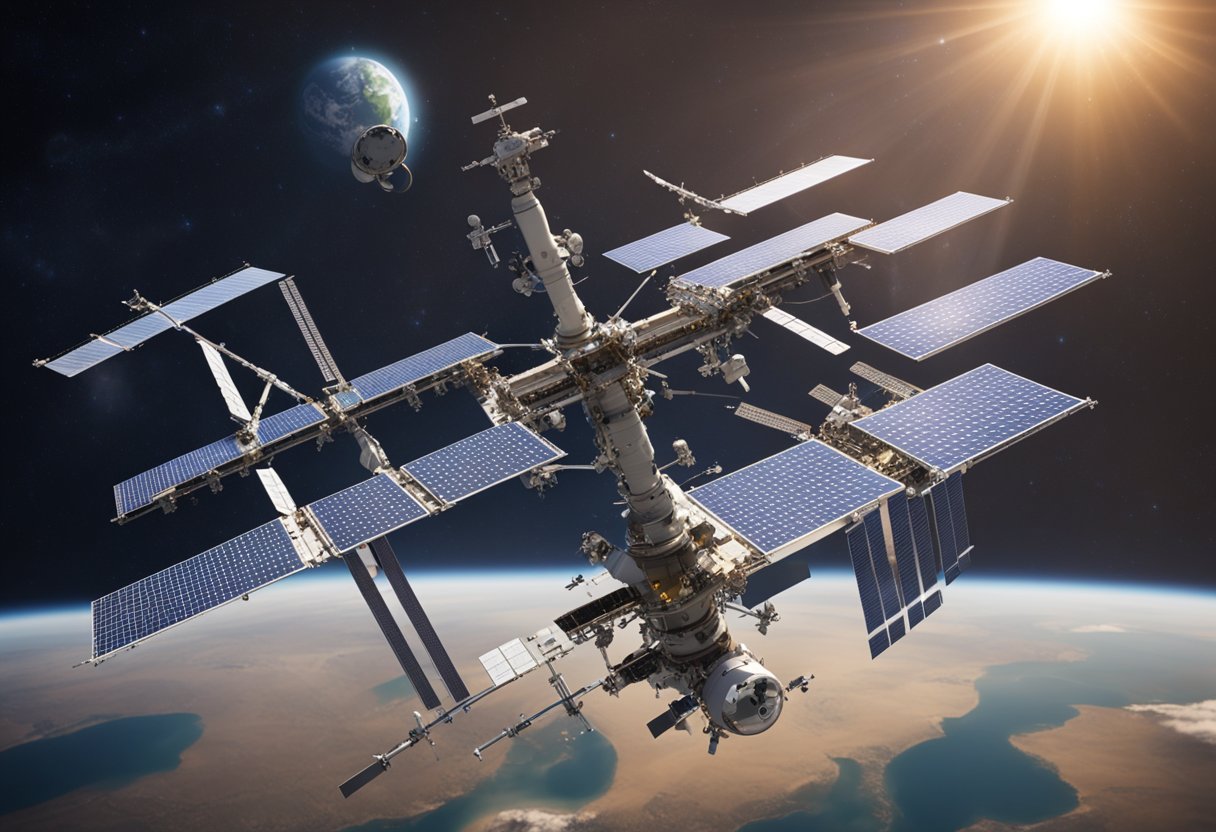
We strive to clear up any confusion and satisfy your curiosity with the most updated and specific details pertaining to life and operations on the International Space Station (ISS).
The ISS is a hub of international collaboration, currently hosting astronauts from agencies including NASA, Roscosmos, JAXA, ESA and CSA. The composition of the crew varies with scheduled missions and expeditions.
Astronauts on the ISS are engaged in a range of experiments, from biology and biotechnology to physical science and Earth science. These investigations help us understand more about life in microgravity and have far-reaching impacts on medicine and technology.
Presently, the ISS is docked with spacecraft like the SpaceX Crew Dragon and the Russian Soyuz, which ferry crew and cargo to and from the station. This connects the ISS to ongoing space missions and support systems.
Astronauts follow a structured daily routine that includes work on scientific experiments, exercise to counteract the effects of microgravity, and personal time. Living conditions are designed to maximise efficiency and comfort in the confined space of the station.
The ISS orbits our planet approximately every 90 minutes. By using real-time tracking tools like Spot The Station, anyone can find out the current position of the ISS and view its overhead pass predictions for specific locations.
The salary of astronauts varies based on their experience and the specific agency they work for. In general, NASA astronauts are typically civil servants and their pay grades are determined according to government standards.